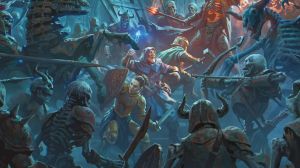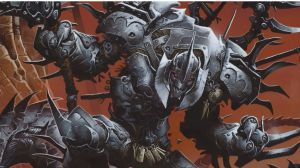Ghosts of Saltmarsh doesn’t involve saving the world from death curses, dragon gods, or demon lords, but that doesn’t make it any less fantastic or immersive than other recent Dungeons & Dragons adventures. In recent years, the official Dungeons & Dragons adventures have involved potentially world-altering stakes. Tomb of Annihilation involved players discovering the source of a curse that prevented resurrections. Storm Giant’s Thunder focused on an invasion of giants that threatened all of the Sword Coast. Even last year’s Waterdeep: Dragon Heist, while not centered on saving the world, contained a group of incredibly dangerous villains, all of whom desired a hidden treasure trove that could fund their nefarious goals and shake the city of Waterdeep to its core. Dungeons & Dragons has provided players with plenty of examples on how to build an epic adventure in recent years, but seemingly at the cost of low-key stories.
Videos by ComicBook.com
That’s why I loved Ghosts of Saltmarsh, the new Dungeons & Dragons book released back in May. The book contains seven updated versions of classic modules originally published for older editions of D&D, loosely organized into a Level 1-Level 12 campaign. At the heart of Ghosts of Saltmarsh is the small but bustling port town of Saltmarsh. Saltmarsh is located in a far-off corner of Greyhawk, the classic campaign setting created by D&D co-creator Gary Gygax. And while the city is on the rise and has attracted the attention of some regional powers, players will spend most of their time dealing with the problems that plague any small fantasy town.
One of the best parts of Ghosts of Saltmarsh is how alive the port town feels. Not only is the town firmly set within Greyhawk, a beloved campaign setting that has sat mostly unused in D&D’s Fifth Edition publications, it also contains a ton of interesting factions and regional points of interest. The whole area feels very alive, and it seems that there’s so much more to do in Saltmarsh than what’s presented in the book. While Ghosts of Saltmarsh doesn’t contain quite as much information as a campaign setting, there’s enough of a foundation for DMs to build their own adventures set inside the ruins of the Tower of Zenopus or the Dreadwood.

Because Ghosts of Saltmarsh lacks the epic stakes of other recent D&D adventures, it feels very unique and different. For example, the entire first adventure deals with the secrets of an old haunted house with a very “Scooby Doo” like twist. Because players are usually caught up trying to stop something like the forces of hell from invading the Material Plane, a haunted house usually wouldn’t get much more than a paragraph or a footnote in another D&D adventure. But in Ghosts of Saltmarsh, a haunted house gets fully explored and leads to the discovery of an even bigger threat, one that threatens the entire region, but not necessarily all of existence.
In addition to a series of fun, regional adventures, Ghosts of Saltmarsh also contains a new set of vehicle rules that should play a big role in future D&D adventures. Although the rules are used to control ships in Ghosts of Saltmarsh, they can also be easily adapted for things like siege engines, carts, or even Infernal War Machines. The new vehicle rules are very intuitive and provide every player with something to do, even outside of combat. When a player isn’t manning a cannon against pirates, they could be raising morale of the crew or keeping them healthy with a good meal. These new rules should decrease the tediousness of sea travel and open up a host of options for DMs tired of exploring the same types of wilderness over and over.
To be clear, I’m a fan of D&D’s “big” adventures, but Ghosts of Saltmarsh is a reminder that you don’t need to save the world to be the hero of a D&D story. Sometimes being a hero means you’re protecting lizardman villages or investigating a series of murders that were already “solved” by an uncaring town guard. Sometimes a tribe of sahuagin is just as dangerous as a demon invasion, or a baby kraken is the biggest danger you’ll face over the course of an entire campaign. Not every D&D story needs epic threats, and rescuing a small town is just as important as stopping a mad lich from consuming the soul of thousands. Ghosts of Saltmarsh proves that D&D can be both big or small, and that any sized adventure can feel important if given the proper context.
Ghosts of Saltmarsh is available for sale now.





